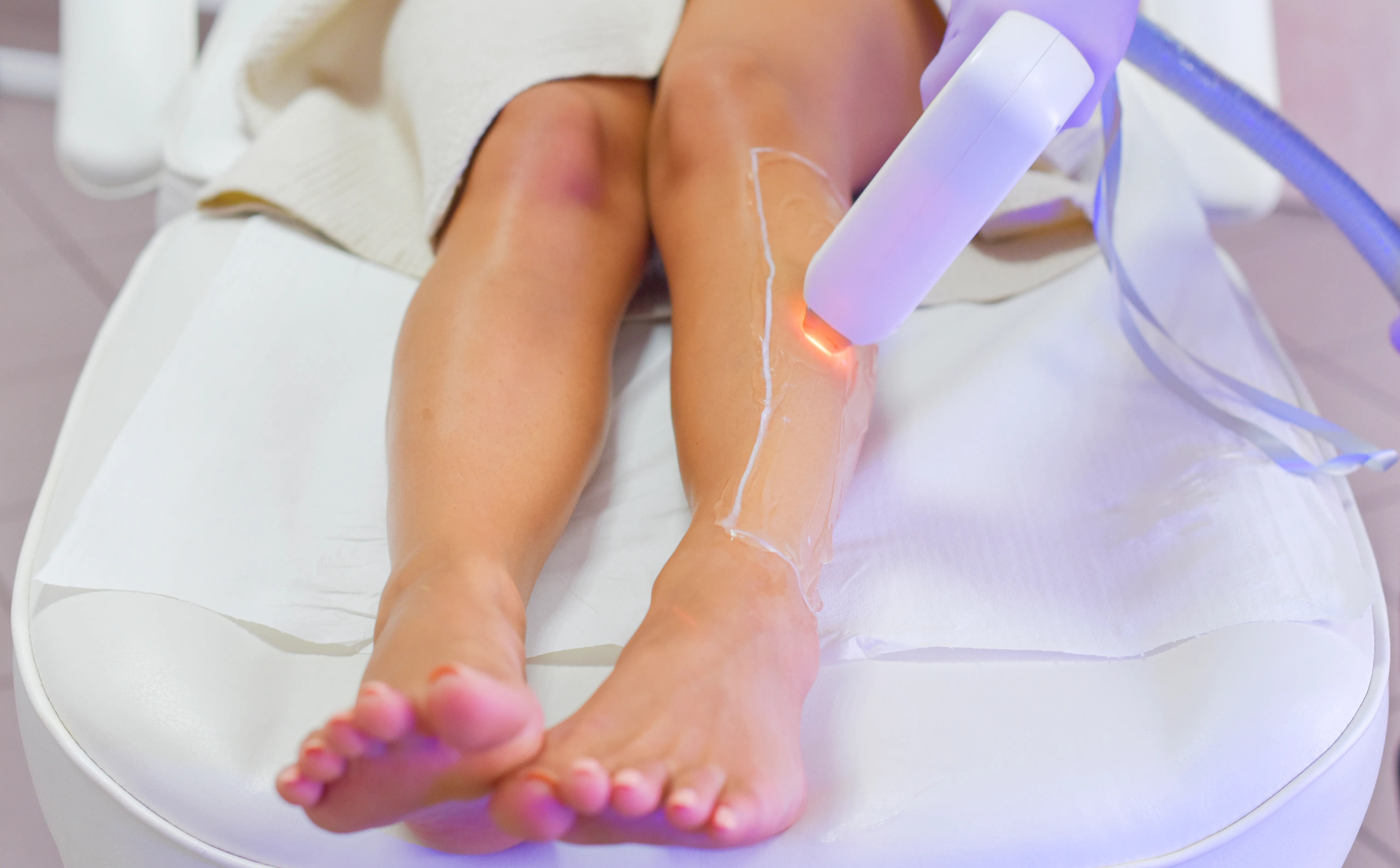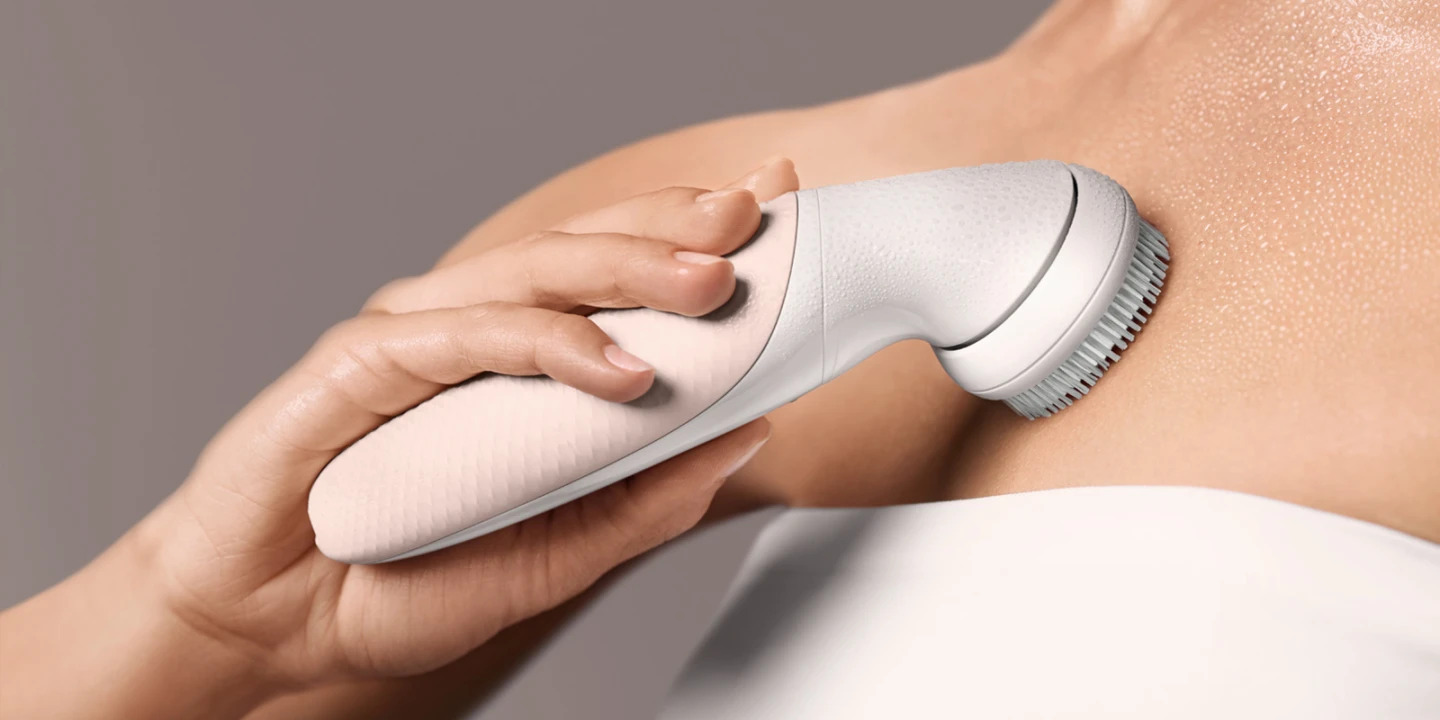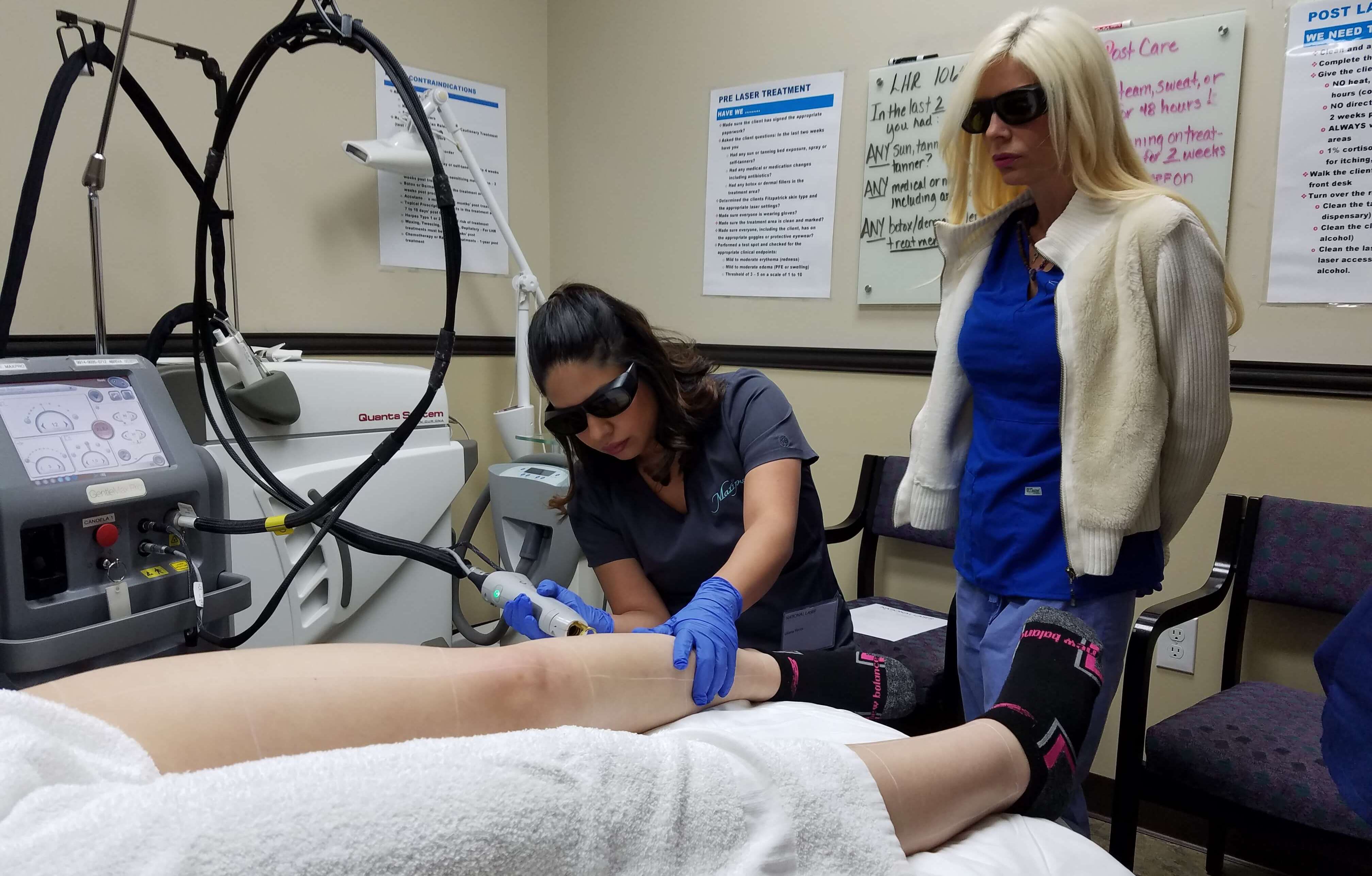

FAQs
When You Get Laser Hair Removal Does It Grow Back
Modified: September 23, 2023
Looking for answers about laser hair removal? Find out if hair grows back after getting the treatment and clear your doubts about this popular procedure.
(Many of the links in this article redirect to a specific reviewed product. Your purchase of these products through affiliate links helps to generate commission for Under-tec.com, at no extra cost. Learn more)
Table of Contents
Introduction
Laser hair removal has become a popular choice for those looking to permanently reduce unwanted hair. It offers a long-lasting solution compared to traditional methods like shaving, waxing, or plucking. But before diving into the world of laser hair removal, it’s important to understand how it works and what to expect in terms of hair regrowth.
Laser hair removal is a cosmetic procedure that uses laser technology to target hair follicles, selectively damaging them to inhibit future hair growth. The process involves directing concentrated beams of light onto the skin, which is absorbed by the pigment in the hair follicles. The heat generated from the laser damages the follicles, leading to a delay in hair growth and, over time, a reduction in the number of actively growing hairs.
Many people wonder if hair will grow back after laser hair removal and, if so, will it be the same as before? The answer is not black and white. While laser hair removal offers long-lasting results, it’s essential to manage expectations and understand that complete hair removal may not be achievable for everyone.
The effectiveness of laser hair removal can vary depending on various factors, including skin and hair color, hair thickness, and hormonal influences. People with dark hair and light skin tend to respond better to laser treatments because the laser can easily target the melanin pigment in the hair follicles. However, advancements in laser technology have made it possible for individuals with different skin and hair types to benefit from laser hair removal.
It’s important to note that laser hair removal works best on actively growing hairs. Since hair grows in cycles, it usually requires multiple treatment sessions, spaced several weeks apart, to target all the hair in the desired area. Additionally, the results of laser hair removal are not immediate, as hair shedding can continue for a few weeks after each session.
In the following sections, we will delve deeper into how laser hair removal works, the factors that can affect hair regrowth, common misconceptions about the procedure, and tips for managing hair regrowth after laser hair removal.
How Laser Hair Removal Works
Laser hair removal is a popular cosmetic procedure that uses laser technology to target the hair follicles and inhibit hair growth. The process involves a series of treatments that are typically performed by a trained professional in a dermatology or aesthetic clinic.
The first step in laser hair removal is to prepare the skin by shaving the area to be treated. This ensures that the laser can effectively target the hair follicles without interference from the surface hair. Some clinics may also apply a numbing cream to minimize any discomfort during the procedure.
Once the skin is prepared, the laser device is adjusted to match the individual’s skin color and hair type. The laser emits a concentrated beam of light that is absorbed by the pigment (melanin) present in the hair follicles. The melanin absorbs the energy from the laser, which then transforms into heat.
The heat generated by the laser damages the hair follicles, specifically targeting the cells responsible for hair growth. This process is known as selective photothermolysis, where the laser energy is focused on the hair follicles while leaving the surrounding skin unharmed.
It’s important to note that laser hair removal targets hair in its active growth phase, known as the anagen phase. At any given time, only a portion of the hair follicles are in this phase, which is why multiple treatment sessions are needed to target all the hair in a specific area.
During the treatment, individuals may experience a slight stinging sensation or discomfort, which can vary depending on the sensitivity of the skin and the treatment area. However, most people find the procedure tolerable and experience minimal discomfort.
After the treatment, it’s normal to have some redness and swelling in the treated area. This usually subsides within a few hours to a day. Some individuals may also experience temporary pigmentation changes, such as darkening or lightening of the skin, which typically resolve on their own.
It’s essential to follow the post-treatment care instructions provided by the clinician to ensure the best results and minimize any potential side effects. This may include avoiding sun exposure, using sunscreen, and moisturizing the skin.
Overall, laser hair removal offers a convenient and effective way to remove unwanted hair. While it may not provide permanent hair removal, it can significantly reduce hair growth in the treated area, resulting in smoother and less time-consuming maintenance.
The Effectiveness of Laser Hair Removal
Laser hair removal is widely regarded as a highly effective method for reducing unwanted hair growth. It offers significant advantages over traditional hair removal techniques like shaving, waxing, or plucking, which provide only temporary results.
The effectiveness of laser hair removal can vary depending on several factors, including the individual’s skin color, hair color, hair thickness, and the specific laser technology used. Generally, individuals with darker hair and lighter skin tend to be the best candidates for laser hair removal because the laser can easily target the melanin pigment in the hair follicles.
However, advancements in laser technology have made it possible for people with different skin and hair types to benefit from laser hair removal. For those with lighter hair or darker skin, specific laser systems, such as Nd:YAG or diode lasers, may be used to achieve satisfactory results.
The number of treatments required for optimal results can vary depending on factors such as the treatment area, hair density, and hair growth cycle. On average, most people require between 6 to 8 treatment sessions spaced several weeks apart. This allows the laser to target hair follicles in different growth stages and ensures maximum hair reduction.
It’s important to note that laser hair removal does not guarantee 100% hair removal. While it significantly reduces hair growth, some fine or light-colored hairs may still remain. Additionally, new hair follicles may activate over time due to factors like hormonal changes, which could require touch-up sessions down the line.
It’s crucial to manage expectations and understand that results may vary from person to person. Some individuals may experience a noticeable reduction in hair growth after just a few sessions, while others may require more treatments to achieve the desired outcome.
When performed by a trained professional using appropriate laser technology and under suitable treatment settings, laser hair removal can be highly effective in achieving long-lasting hair reduction. It offers the convenience of minimizing the need for regular hair removal methods and can provide smoother, hair-free skin in the treated area.
It’s worth noting that the effectiveness of laser hair removal can be further enhanced by following a proper skincare routine, avoiding excessive sun exposure, and adopting a healthy lifestyle. Proper care and maintenance can help prolong the results and ensure optimal hair reduction over time.
Factors That Can Affect Hair Regrowth After Laser Hair Removal
While laser hair removal offers significant hair reduction, it’s essential to understand that several factors can influence hair regrowth after the treatment. These factors can determine the extent and longevity of the results obtained from laser hair removal.
1. Hair Color and Thickness: The effectiveness of laser hair removal largely depends on the color and thickness of the hair. The laser targets the pigment (melanin) in the hair follicles, so individuals with darker and thicker hair tend to respond better to treatment. Lighter or finer hair may be more challenging to target and may require more treatment sessions.
2. Skin Color: The contrast between the hair color and skin color plays a role in the effectiveness of laser hair removal. The laser needs to differentiate between the hair follicles and the surrounding skin. Individuals with lighter skin and darker hair typically have the best contrast, making them ideal candidates for laser hair removal. However, technological advancements have made it possible for people with different skin types to benefit from laser treatments.
3. Hormonal Influences: Hormonal changes in the body, such as pregnancy, menopause, or certain medical conditions, can affect hair growth patterns. Hormonal imbalances can result in increased hair growth or the activation of dormant hair follicles. It’s important to address any underlying hormonal issues to achieve optimal results from laser hair removal.
4. Treatment Area: The location of the treatment area can impact hair regrowth. Some areas, such as the face or underarms, may require more frequent touch-up sessions due to hormonal influences or the presence of more hair follicles in those regions. On the other hand, areas like the legs or arms may exhibit slower hair regrowth.
5. Treatment Quality and Expertise: The quality of the laser hair removal treatment and the expertise of the clinician performing the procedure can significantly affect the outcomes. It’s crucial to choose a reputable clinic with experienced professionals who use the appropriate laser technology for your specific skin and hair type.
It’s important to note that hair regrowth after laser hair removal may occur, but it is often lighter, finer, and sparser compared to the original hair. The treated hair follicles can become damaged or dormant, resulting in prolonged periods of hair-free skin. However, new follicles can become active over time due to various factors, necessitating maintenance sessions to address any regrowth.
Remember that laser hair removal offers long-lasting results but may not guarantee permanent hair removal. It’s essential to have realistic expectations and understand that occasional touch-up sessions may be required to maintain the desired level of hair reduction.
By considering these factors and working with a qualified professional, individuals can achieve optimal results from laser hair removal and enjoy smoother, hair-free skin for an extended period.
Common Misconceptions about Laser Hair Removal
Laser hair removal has gained popularity as an effective method for reducing unwanted hair growth. However, there are several misconceptions surrounding the procedure that can lead to misunderstandings or unrealistic expectations. Let’s debunk some of the common misconceptions about laser hair removal:
1. Laser Hair Removal Provides Permanent Hair Removal: While laser hair removal offers long-lasting results, it does not guarantee permanent hair removal. The treatment targets active hair follicles, but new follicles can become active over time due to factors like hormonal changes. Periodic touch-up sessions may be necessary to maintain the desired level of hair reduction.
2. Laser Hair Removal Works Equally Well for Everyone: The effectiveness of laser hair removal can vary depending on factors such as hair color, skin color, and hair thickness. Dark, coarse hair and lighter skin tend to respond best to laser treatments. However, advancements in technology have made laser hair removal more accessible for individuals with different skin and hair types.
3. Laser Hair Removal is Painful: While laser hair removal may cause some discomfort, many individuals report only minimal pain during the procedure. Most laser devices use cooling mechanisms to minimize any discomfort and protect the skin. The sensation is often described as a slight prickling or tingling feeling that is well-tolerated by most people.
4. Laser Hair Removal is Instant: Laser hair removal is not an instant fix. It requires several treatment sessions to target all the hair follicles in the desired area. Additionally, results are not immediate as hair shedding can continue for a few weeks after each session. It’s important to be patient and consistent with the treatment plan for optimal results.
5. Laser Hair Removal Can be Done at Home with DIY Devices: While there are various at-home laser hair removal devices available on the market, professional treatments performed by trained clinicians offer greater effectiveness and safety. The devices used in clinics are more powerful and can be calibrated to suit individual skin and hair conditions, providing better results and minimizing the risk of adverse effects.
6. Laser Hair Removal is Expensive: The cost of laser hair removal may vary depending on the treatment area, number of sessions required, and geographical location. While it may seem costly upfront, it can actually be more cost-effective in the long run compared to the continuous expenses of temporary hair removal methods over time. Additionally, many clinics offer financing options or package deals to make it more affordable for individuals.
Understanding these common misconceptions can help individuals make informed decisions about laser hair removal. Consulting with a qualified professional and having realistic expectations will ensure a positive experience and satisfactory results.
Managing Hair Regrowth After Laser Hair Removal
After undergoing laser hair removal, it’s important to have a plan in place for managing hair regrowth to maintain the desired results. While laser hair removal offers long-lasting reduction in hair growth, occasional touch-up sessions and proper maintenance can help prolong the effects. Here are some tips for managing hair regrowth after laser hair removal:
1. Follow the Recommended Treatment Schedule: Laser hair removal requires multiple treatment sessions to target all the hair follicles in the desired area. It’s crucial to follow the recommended treatment schedule set by your clinician. Skipping or delaying sessions can result in less effective results and slower hair reduction.
2. Be Consistent with Maintenance Sessions: Periodic touch-up sessions are often necessary to address any regrowth and maintain the desired level of hair reduction. These sessions can be scheduled months or even years after the initial treatment, depending on individual hair growth patterns and preferences. Regular touch-ups ensure continued hair reduction over time.
3. Adopt a Proper Skincare Routine: Taking care of your skin after laser hair removal can help manage hair regrowth. Moisturize the treated area regularly to keep the skin hydrated and healthy. Avoid harsh scrubs or exfoliants that may irritate or damage the skin. Additionally, protecting the treated area from excessive sun exposure by using sunscreen or covering up can help prevent any PIH (post-inflammatory hyperpigmentation) or other skin issues.
4. Avoid Tweezing or Waxing: While undergoing laser hair removal and in between sessions, it’s important to avoid tweezing or waxing the treated area. These methods can remove the hair follicles targeted by the laser, making it difficult for the laser to effectively treat them. Shaving or trimming the hair instead is the recommended method for maintenance in between sessions.
5. Stay Mindful of Hormonal Influences: Hormonal changes can affect hair growth patterns. Be mindful of any hormonal shifts due to factors like pregnancy, menopause, or certain medications. These changes can activate previously dormant hair follicles or cause increased hair growth in some areas. It may be necessary to adjust your treatment plan accordingly or discuss potential hormonal management options with your healthcare professional.
6. Consider Combination Treatments: In some cases, combining laser hair removal with other hair reduction methods, such as electrolysis, may provide effective results. Electrolysis targets individual hair follicles and can be useful for treating fine or light-colored hairs that may not respond well to laser treatment alone. Consult with your clinician to determine if a combination approach is suitable for your specific needs.
Remember, each individual’s hair regrowth patterns and needs may vary. It’s important to communicate openly with your clinician throughout the treatment process to address any concerns or questions you may have. With proper maintenance and adherence to recommended guidelines, you can enjoy long-lasting hair reduction and smoother, hair-free skin.
Conclusion
Laser hair removal offers a long-lasting solution for reducing unwanted hair growth. Understanding how laser hair removal works, its effectiveness, and managing hair regrowth are essential for realistic expectations and optimal results.
Laser hair removal works by targeting hair follicles with concentrated beams of light, damaging them to inhibit future hair growth. While it offers significant reduction in hair growth, complete hair removal may not be achievable for everyone. Factors such as hair color, skin color, and hormonal influences can affect the effectiveness of the treatment.
Managing hair regrowth after laser hair removal involves following the recommended treatment schedule and being consistent with maintenance sessions. Adopting a proper skincare routine, avoiding tweezing or waxing, and staying mindful of hormonal influences can also contribute to managing hair regrowth effectively.
It’s important to address common misconceptions about laser hair removal, such as expecting permanent hair removal or thinking that the treatment works equally well for everyone. Understanding these realities will ensure that individuals have realistic expectations and make informed decisions.
By working with a qualified professional and following their recommendations, individuals can enjoy smoother, hair-free skin for a significant period. However, periodic touch-up sessions and proper maintenance are necessary to manage any hair regrowth and maintain the desired level of hair reduction.
Ultimately, laser hair removal is a convenient and effective option for those seeking long-term hair reduction. With proper care and realistic expectations, individuals can enjoy the benefits of smoother, hair-free skin and achieve their desired results.










